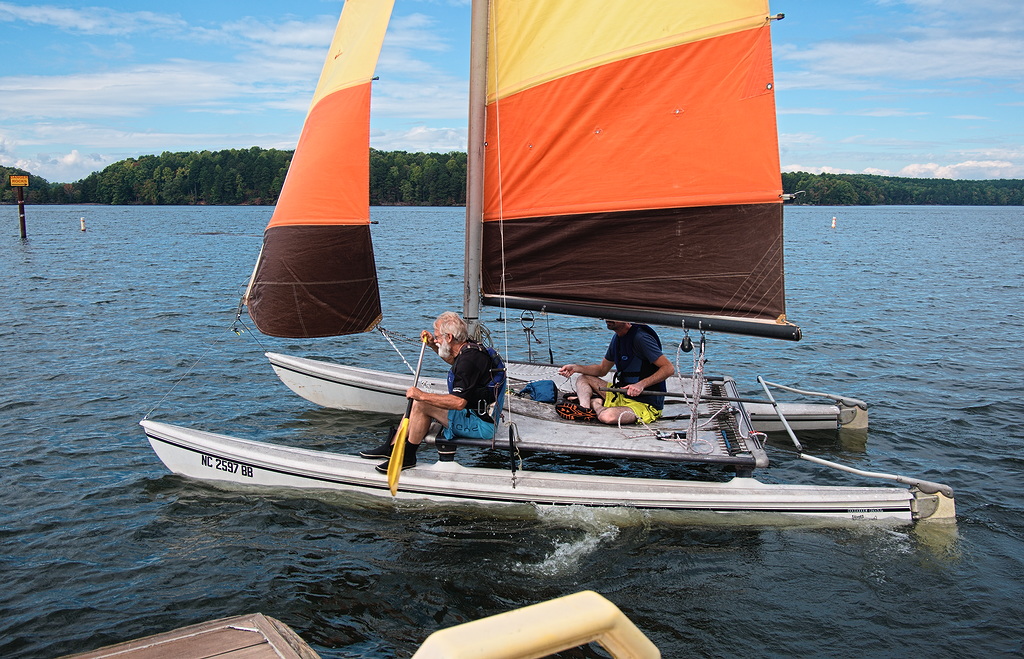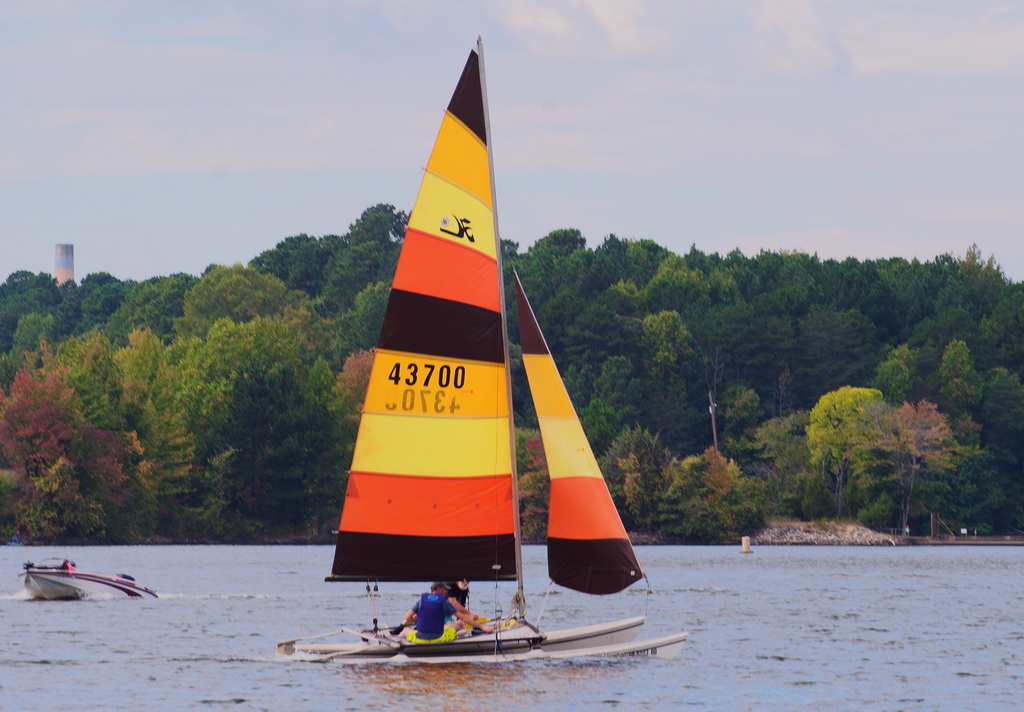Hobie Recovery
Text and Photographs by Paul Clayton
 |
Part I
It all started with an email from my Hobie-sailing friend Mark. "Looks like I have a boat almost ready. Just tying up some battens this evening and planning to leave by 8:00."
Mark and his friend Jonathan were planning to spend a day on Lake Norman, sailing one of his small fleet of Hobie Cats, and I was thinking about following down to get some pictures, and maybe provide support in Mark's father's Sea Ray runabout. I emailed back that I would drive my own car and meet them at the Pinnacle Access Area on the lake.
As I left my house just before 8:00 the next morning, it occurred to me that if they were running a few minutes late, I might catch them at Mark's place, just off the highway ten miles south of town. Sure enough, they were in the field behind his house, finishing preparations. Shortly we were on the road for the Access Area, a few miles west of Mooresville.
It was a beautiful fall day, mostly blue skies with a slight chance of an isolated shower, and winds in the 6-10 miles per hour range early in the day, building into the afternoon to 15-20 with the potential for gusts to 29. A bit blustery for Hobie sailing, but if they could get down to the lake and do some sailing early, they could be off the water by the time the stronger winds appeared.
We arrived at the Access at 9:30, about a half hour late, and went to work setting up the boat. Stepping the mast went easily, as did bending the jib. Jonathan rove a new line for the jib sheet. Hobies use a long loop that operates the traveler as well as sheeting the jib. Mark and I worked on tying in a righting line, which supposedly can be used by the crew to self-rescue an overturned boat. Next step was to bend the main, also no big deal.
 |
The last job was to reeve a new mainsheet. The old one was gone, so we didn't have a pattern to follow. Hobies use a complex double-ended sheet with multi-purchase blocks and two jam cleats. We had a hard time figuring it out. Eventually Jonathan found a clear enough explanation on Google that we were able to get it rove.
With the boat rigged, Mark hopped in the truck and pulled around to the ramp. A gust of wind caught the sails and pushed the boat over the front of the trailer, so we stopped and pushed it back in place. Mark backed down the ramp, and Jonathan waded out into the water and pulled the boat off the trailer. We spun it around to face out, ready to sail. It was now 11:30, getting late, so we belayed the idea of shuttling up to Skipper's Marina and getting the runabout. I told them to have fun and I would try to find some good vantage points to get pictures, and then drive back to Winston.
I helped push them off the dock, as Mark dug in with a paddle and Jonathan manned the tiller. Once past the end of the dock, they turned off to port, caught some wind and sailed out into the bay. When they were clear of the Access Area signs and clutter, they tacked to starboard, got on a beam reach and rocketed away. They soon cleared the point and disappeared up the lake. I drove around but never found a good vantage point for photographs. The shoreline of Lake Norman is built up with houses on heavily wooded lots, so it is hard to see the water. I did get one glimpse of them far off in the distance just before they passed behind a deserted island in the middle of the lake.
That was it for me, and I made a long, pleasant loop driving home by way of Catawba. In the evening, I got an email from Mark with the ominous subject line "Hobie sailing and sinking". I quickly opened it and found the following: "Had to abandon the boat. Going to get it tomorrow mid morning. Hope you got pictures. Was it you that sent the Sherrills Ford fire and rescue to help? They were great!"
More to follow in Part II.
Text and Photographs by Paul Clayton. Posted 10/18/21.
Copyright © 2021 Paul M. Clayton